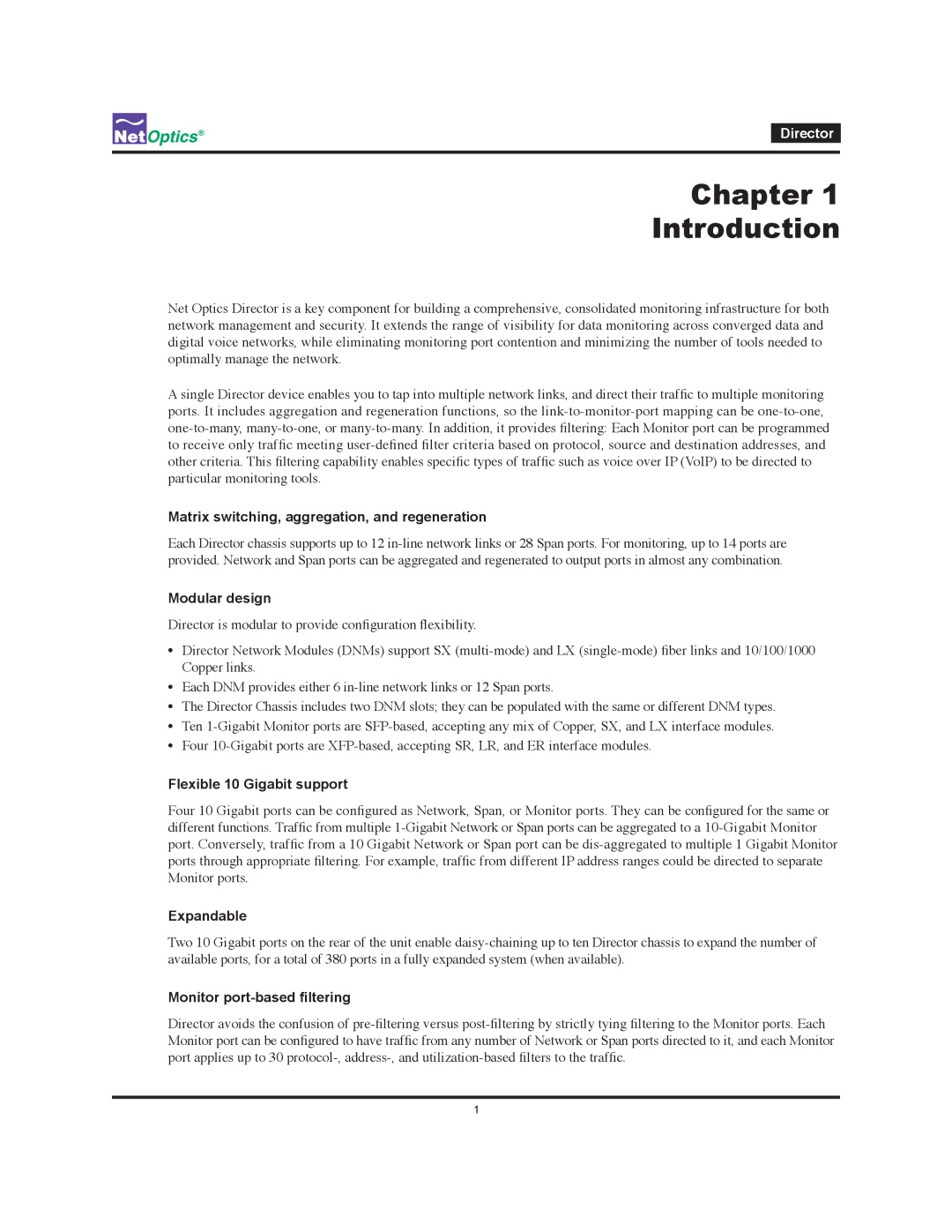Chapter 1
Introduction
Net Optics Director is a key component for building a comprehensive, consolidated monitoring infrastructure for both network management and security. It extends the range of visibility for data monitoring across converged data and digital voice networks, while eliminating monitoring port contention and minimizing the number of tools needed to optimally manage the network.
A single Director device enables you to tap into multiple network links, and direct their traffic to multiple monitoring ports. It includes aggregation and regeneration functions, so the link-to-monitor-port mapping can be one-to-one, one-to-many, many-to-one, or many-to-many. In addition, it provides filtering: Each Monitor port can be programmed to receive only traffic meeting user-defined filter criteria based on protocol, source and destination addresses, and other criteria. This filtering capability enables specific types of traffic such as voice over IP (VoIP) to be directed to particular monitoring tools.
Matrix switching, aggregation, and regeneration
Each Director chassis supports up to 12 in-line network links or 28 Span ports. For monitoring, up to 14 ports are provided. Network and Span ports can be aggregated and regenerated to output ports in almost any combination.
Modular design
Director is modular to provide configuration flexibility.
•Director Network Modules (DNMs) support SX (multi-mode) and LX (single-mode) fiber links and 10/100/1000
Copper links.
•Each DNM provides either 6 in-line network links or 12 Span ports.
•The Director Chassis includes two DNM slots; they can be populated with the same or different DNM types.
•Ten 1-Gigabit Monitor ports are SFP-based, accepting any mix of Copper, SX, and LX interface modules.
•Four 10-Gigabit ports are XFP-based, accepting SR, LR, and ER interface modules.
Flexible 10 Gigabit support
Four 10 Gigabit ports can be configured as Network, Span, or Monitor ports. They can be configured for the same or different functions. Traffic from multiple 1-Gigabit Network or Span ports can be aggregated to a 10-Gigabit Monitor port. Conversely, traffic from a 10 Gigabit Network or Span port can be dis-aggregated to multiple 1 Gigabit Monitor ports through appropriate filtering. For example, traffic from different IP address ranges could be directed to separate Monitor ports.
Expandable
Two 10 Gigabit ports on the rear of the unit enable daisy-chaining up to ten Director chassis to expand the number of available ports, for a total of 380 ports in a fully expanded system (when available).
Monitor port-based filtering
Director avoids the confusion of pre-filtering versus post-filtering by strictly tying filtering to the Monitor ports. Each Monitor port can be configured to have traffic from any number of Network or Span ports directed to it, and each Monitor port applies up to 30 protocol-, address-, and utilization-based filters to the traffic.

